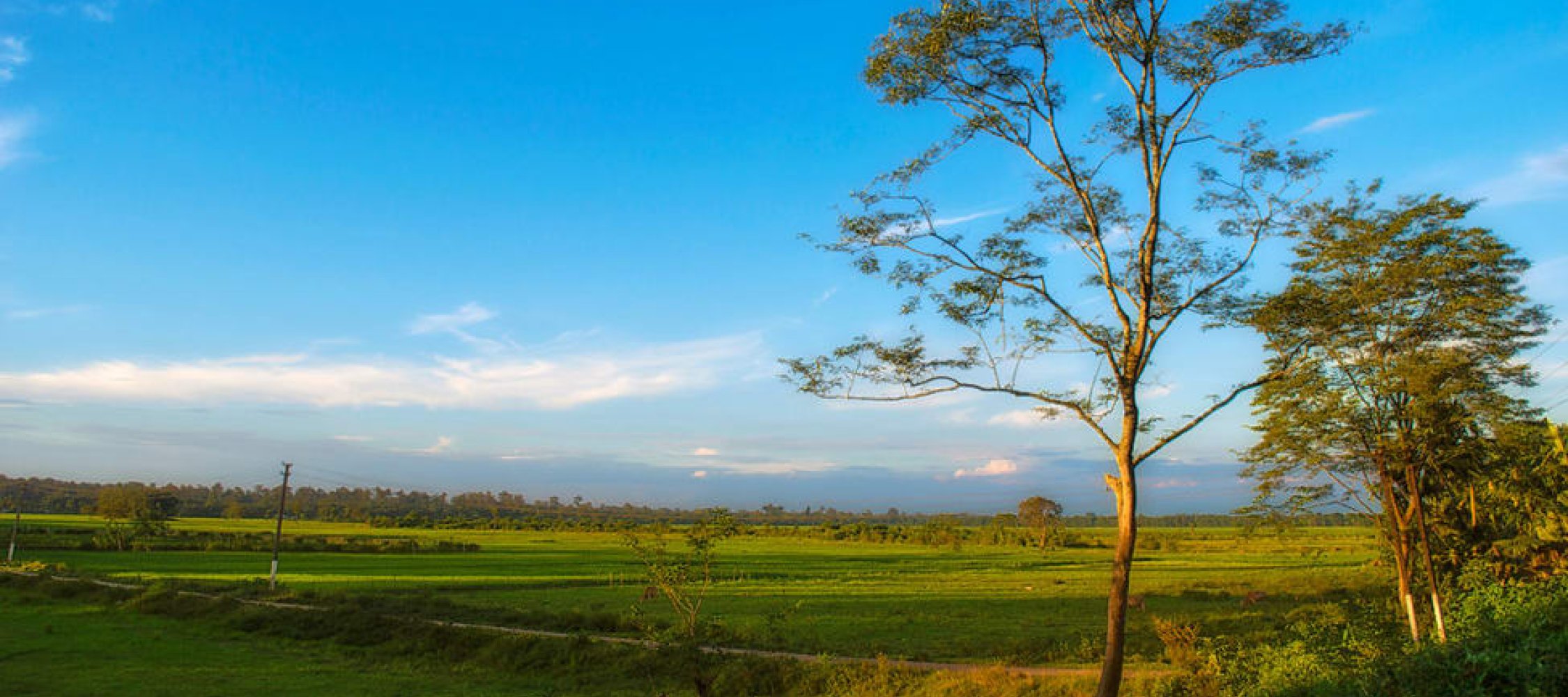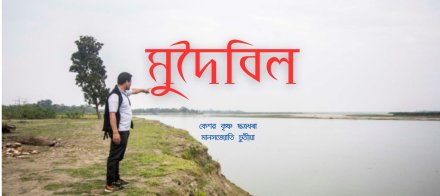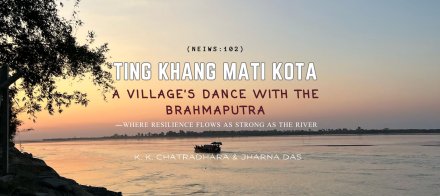 |
“The water that comes from the tube-well seems oily”, says the locals.
The place is covered by agricultural land, and it is the primary source of livelihood for the people of Pathar Basti. How could they afford to lose it? In the month of July in the year 2018, I was introduced to the name of the village Pathar Basti for the first time. It looks like an island in the middle of paddy fields, at the back of Digboi, the main town. The place is a small area with 20 to 25 families of tea-tribe people whose livelihood depends on paddy cultivation. Although water problems are a common issue, we come across everywhere, but here it is something different. Unlike other places, people here are unknown about the major issue created by the water which they actually consume. Stories here turn out to be different because a village which is just a few miles away from the well-developed main town which gets no attention and no one knows about it. An oil canal passing nearby the small village remains unnoticed which seems just like a normal canal, but more disturbing to know that the small normal canal is harmful to the lives of people residing in that very place, and they have no proper knowledge of it. The canal brings the industrial waste, which is a common threatening issue in today’s world for the environment as well as human being. The dominating industrial sector tries to hide the reality by putting argument that they are necessary development for the society, it is true, but it has a much more dark truth behind.
July 2018 it was, in the rainy season, I visited the village. It was half drowned in water from the overflow of drains nearby. The roads connecting the mainland and the village are already a kaccha road which seems to disappear from the flash flood. As I slowly moved towards the half drowned village, I could feel the pathetic condition of the land. It seemed like a small island submerged in water. The village was surrounded by the unhygienic water, which was a great threat to the people residing there. While going through the deep routes of the village scenario, I could feel the ground reality. Surviving around water which covers the whole land, but people couldn’t get pure drops of water to drink. The system lops on a pathetic sail of changing phenomenon of nature. Like how we tend to see people drowning deep in water but not getting a single drop to survive. The problem tends to take us to the actual reason of sufferings. As I made my move towards the houses for knowing the root of the pathetic condition and found that the village drowns every monsoon. While, the water overflows and touches the yard of every house located there, and it brings many problems along with it. The children of the village do not want to go to school because they have to cross the dirty water to reach their school, which makes their dresses and bags ruined. The dirty water from the nearby passing oil canal mixes with the floodwaters, which brings a great thereat to the villagers by increasing the chances of bringing the harmful elements from the already existing harmful industrial discharge of the nearby canal. People find it difficult to get to the mainland through the half drowned road. Along with the main problems, there are problems like the unhygienic water might bring harmful disease from unknown sources which they are not aware of. I talked to the locals about how the effect of water. At the very first, I found that the rainy season and overflow water is a boon to them as well as a curse. As the people of this very land are totally dependent on the rice cultivation, so monsoon brings a fortune for the cultivators also overflow of water brings fishes which become a source of their food. Second, I found that the water they get from the tube well is not at all hygienic to use it for any purpose, it contains a high iron percentage, and sometimes it also smells like oil. The locals also said that even after boiling it, the water remains the same smelly and smoky. They are so deprived that they cannot even afford a filter, although they use the homemade filter, but it might not be so effective for such unhygienic water. Third, I found that the literacy rate of the place is very low, which makes the people unaware of the things going around them, also they are unaware of their rights, and it makes their life more complicated. The village not only faces water problems and scarcity of fresh water, but it lacks behind many other problems which one cannot leave behind. This village was with no electricity until year 2018, although electricity set up was there, but they were deprived of the supply of electricity. To our concern, a team of NSS Digboi College Unit a report was submitted to the concerned authority, after that, they were provided the electricity supply. The team also provided all the household water filters, which were helped by the District authority so that they could at least get pure water to drink. Fourthly, I found that they did not use their toilet as those toilets that were provided by the government were in incomplete condition and to them making of toilet is not at all affordable. So I found that there was a prevalence of open defecation because of the non-availability of proper sanitation facilities and lack of proper knowledge of the people residing there. The custom of open defecation is a threat to their environment as bacteria, flies and many more microorganisms might transmit to their water bodies, foods and might cause harm to their life. Another step was taken by the team to report about the incomplete toilets by Govt. to the district authority, which was taken into notice and took action very soon. These sensitive problems were not known by the people living there before they were being aware through various awareness campaigns and demonstrations. As there is no one to voice up for them, and therefore they lack their deserved asset, which would have been possible if there were more number of literates in the village.
Pathar Basti holds a special aura of the nature. Behind the busy town, it is a place which has a grip to the natural beauty. I have observed many natural elements which can rarely be seen in the whole town. The most amazing one was the presence of weaver birds and their hanging nests, which looked amazing. Such beautiful natural elements added an aura of beauty to the hidden place. The village is not much developed, but it has saved its natural habitation. Here, I found that how the element water can affect so much to a place and its people in both positive and negative ways, and how the right source of water is so necessary. Where on one hand, water saves their household by helping in their cultivation, but at the same time, on the other hand, overflow of the same water source makes their life difficult by drowning them half. It reminds us that one thing can really be very important for us, but it also can destroy us.
I have experienced a total new scenario in this village which I have never felt or never imagined before. Being from the same local area of Digboi I have never faced such difficulty related to water, so I never bothered to imagine such a situation which might bring me difficulty to even getting fresh water to drink. This village changed my way of thinking about the water resources. While I look back to the village scenario, it seems like the village raises a question to very visitors from outside. The question is: if the village, its people and their problems will ever be looked upon by the people of the mainland, officers, politicians, industrialists and the concerned authorities. While the resolutions of politicians or higher officials do not reach to their place. The industrial and other wastes from the nearby canals do affect their environment as well as their health. Also, the concerned authority pays less attention to the place. Will this place remain forever aloof and unseen? Will the people suffer the same always? And the main question is, will the people be deprived of the very basic need of fresh water? The village to me is “water, water, everywhere, nor any drop to drink.”
Story by Nayana Saikia


